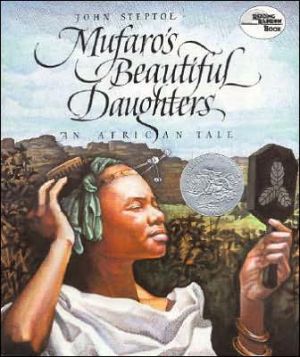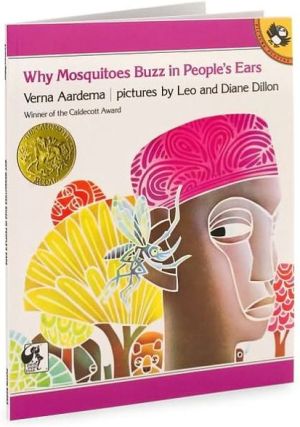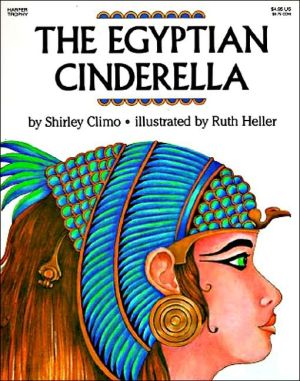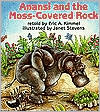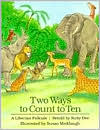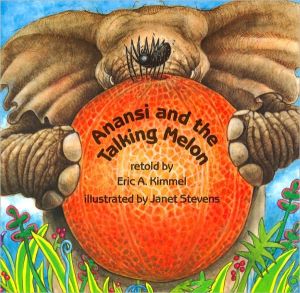Magic Gourd
Coretta Scott King Honor author/artist tells a tale from Mali about a magic gourd that can fill itself with whatever its owner desires. And hidden within is a powerful lesson about generosity.\ Draught and famine have come to the parched forest. And when a hungry Rabbit rescues Brother Chameleon from a thorny bush, Chameleon repays him tenfold with a magical gourd that always stays filled with food and water. But soon a greedy king steals the gourd to make gold and food for himself. Cleverly,...
Search in google:
Draught and famine have come to the parched forest. And when a hungry Rabbit rescues Brother Chameleon from a thorny bush, Chameleon repays him tenfold with a magical gourd that always stays filled with food and water. But soon a greedy king steals the gourd to make gold and food for himself. Cleverly, Rabbit recovers his gourd, but still leaves plenty for the King. Surprised by Rabbit's kind act, the king begins to learn the importance of generosity and friendship. Exciting illustrations in bright ceramic plates, bowls and sculpture practically dance off of the pages.Publishers WeeklyMalian folklore springs to life in the exquisitely painted ceramics that have become Diakit 's (The Hatseller and the Monkeys) illustrative trademark. Set against solid color fields, his bold pottery extends an energizing magic to a traditional African tale of an enchanted gourd. The gourd, which fills with whatever its owner desires, is a gift to Brother Rabbit for his altruism in freeing Chameleon from a thorny bush. Rabbit uses the magic vessel to feed his hungry family and the rest of his impoverished village. Here, several photographs of ceramic bowls, all with intricate black-and-white exterior designs, break up the text. Viewed from different angles, the interiors of the bowls change to match the text: at first readers see the faces of Rabbit's family reflected as they peer inside; elsewhere, the interior is painted with carrots and then with water. The story plays out on plates and tiles in impressively detailed paintings. Deepening the impact of the illustrations, traditional Malian mud cloth patterns border the ceramics. Extensive endnotes explain each motif's meaning, define the text's many Malian sayings and words, illuminate the cultural context and identify the tale's folkloric "cousins" around the world. A visually invigorating work. Ages 5-8. (Feb.) Copyright 2002 Cahners Business Information.
\ Publishers WeeklyMalian folklore springs to life in the exquisitely painted ceramics that have become Diakit 's (The Hatseller and the Monkeys) illustrative trademark. Set against solid color fields, his bold pottery extends an energizing magic to a traditional African tale of an enchanted gourd. The gourd, which fills with whatever its owner desires, is a gift to Brother Rabbit for his altruism in freeing Chameleon from a thorny bush. Rabbit uses the magic vessel to feed his hungry family and the rest of his impoverished village. Here, several photographs of ceramic bowls, all with intricate black-and-white exterior designs, break up the text. Viewed from different angles, the interiors of the bowls change to match the text: at first readers see the faces of Rabbit's family reflected as they peer inside; elsewhere, the interior is painted with carrots and then with water. The story plays out on plates and tiles in impressively detailed paintings. Deepening the impact of the illustrations, traditional Malian mud cloth patterns border the ceramics. Extensive endnotes explain each motif's meaning, define the text's many Malian sayings and words, illuminate the cultural context and identify the tale's folkloric "cousins" around the world. A visually invigorating work. Ages 5-8. (Feb.) Copyright 2002 Cahners Business Information.\ \ \ \ \ Children's LiteratureIn this West African folk tale set in the country of Mali, Dogo Zan, or Brother Rabbit, rescues a chameleon, and as a token of his appreciation, the chameleon gives Dogo Zan a magic gourd that will fill with food upon request—a wonderful gift during a time of famine! Dogo Zan and his family generously share the food from the magic gourd with other animals until the greedy king commands Dogo Zan to give him the gourd, leaving the people and animals of the kingdom to starve. Together, Dogo Zan and Brother Chameleon outsmart the king and once again the magic gourd's powers are used to feed the hungry. The kind acts of Dogo Zan and Brother Chameleon teach both the people and the animals of the kingdom the importance of generosity and friendship. Diakité uses photographs of hand-built clay sculptures of chameleons to represent Brother Chameleon, and he uses photographs of ceramic plates, bowls, and tiles to depict the daily life of the Mali people. Lyrics to a song of praise are included, along with a glossary containing English translations for the Bambara (the Mali national language) words used in the story. Diakité's use of Mali artwork and the authentic situations of famine and monarchial leadership make this story culturally appealing. 2003, Scholastic Press, Ages 4 to 7. \ —Christi Conti\ \ \ School Library JournalGr 1-3-Diakite sets his story in his native Mali. After Dogo Zan the rabbit saves a chameleon from a sticky situation, he is given a magic gourd that fills with whatever its owner wishes in payment for his kindness. When the greedy king learns about its magic powers, he takes the gourd by force. Using another gift from the chameleon, Dogo Zan recovers his treasure and teaches a lesson in generosity as well. Diakit illustrates this tale with paintings on ceramic tiles, plates and bowls, and borders with designs from Bamana mud cloth patterns, which are imbued with their own symbolism. The resultant images, set against color-saturated backgrounds, are often arresting. The end matter includes lyrics to a praise song that illustrates the importance of spiritual wealth over material possessions, a description of pertinent aspects of the author's childhood, an explanation of the mud cloth designs, and a note about the widespread dissemination of stories with similar plot motifs. Overall, this is an attractive folktale variant.-Miriam Lang Budin, Chappaqua Public Library, NY Copyright 2003 Cahners Business Information.\ \ \ \ \ Kirkus ReviewsAn intense artistic experience awaits the reader of this highly moral, Malian version of a "magic pot" folktale. Rabbit saves Iguana from his imprisonment in a thorny bush and receives the "magic gourd" with its bottomless bounty as his reward. Rabbit shares his good fortune with everyone, until the avaricious king hears the stories. When the king takes the bowl, Iguana comes to Rabbit's rescue with a second gift, a magic stone that continually hits the king and forces him to bargain with Rabbit and eventually to return the gourd to him. In fact, he becomes so exasperated that he tells Rabbit to take the food in his storage bins as well as his gold, but when Rabbit leaves with only his rightful possession, the king takes it as a lesson. Diakité educates, entertains, and visually enchants from beginning to end. The back cover is a large, arresting picture of the smiling author-illustrator with his two beautiful daughters, holding a large bowl similar to the ones in the photographic images popping out of the deeply-colored pages of the interior. Richly detailed bowls, plates, sculptures, and textiles display stylized characters and mud cloth patterns that symbolize many concepts meaningful to the Bamana people of Mali. Diakité provides a wealth of explanatory material as well as glossary of Bambara words used in the text that greatly enhances the telling. The last few pages include a praise song and an author's note about learning stories about the clever Zazani, or Rabbit, in childhood. A description of the traditional mud cloth patterns used as the borders of the tiles and platters offers additional insights and will send the careful reader back to the story again and again. Finally,Diakité ends with a feature found in his earlier works, The Hunterman and the Crocodile (1997) and The Hatseller and the Monkeys (1999): the description of the international variants of this type of tale. Richly rewarding indeed. (Folktale. 5-10)\ \

